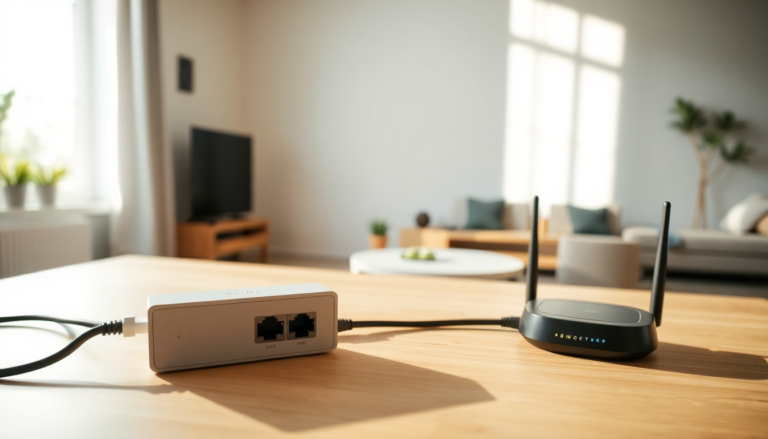Argomenti trattati
In today’s world of smart homes, it’s easy to get caught up in the allure of wireless technologies like Wi-Fi, Zigbee, and Bluetooth. But did you know that many smart devices—from lighting systems to gaming consoles—can really thrive on the reliability and speed of traditional wired ethernet connections? In this article, we’ll explore how ethernet can elevate your smart home experience and provide some practical tips on setting up an efficient network.
The Importance of Wired Connections
Sure, wireless connections are convenient, but they often fall prey to interference and signal drops. This is where good old-fashioned ethernet cables come in. They can significantly enhance performance, particularly for devices that require high bandwidth and low latency. Think about it: smart hubs, Apple TV streaming boxes, and gaming consoles like the PlayStation 5 and Xbox Series X all perform better on a wired connection. A solid ethernet setup can truly be the difference between smooth streaming and frustrating lag.
Many smart home enthusiasts overlook the vital role ethernet plays, assuming that a strong Wi-Fi network will cover all their needs. But as you add more connected devices, the limitations of Wi-Fi start to show. Most routers only come equipped with a few ethernet ports, which is why investing in an ethernet switch can be a smart move to expand your connectivity options.
Choosing the Right Ethernet Switch
When it comes to picking an ethernet switch, the choices are plentiful. If you’re aiming to enhance your home network, consider starting with a simple 5-port gigabit ethernet switch, like those from TP-Link. These affordable switches can transform your setup by allowing multiple devices to connect seamlessly. Depending on your needs, you can find switches with configurations of 8, 16, or even 48 ports.
In my own smart home, I’ve strategically placed three TP-Link ethernet switches for optimal performance. The first one sits under my desk, connecting my PC, Philips Hue Bridge, and a TV tuner—all linked to my mesh Wi-Fi router. This arrangement ensures that devices requiring constant streaming enjoy a stable connection.
Another switch is dedicated to my Raspberry Pi systems, which handle various crucial applications for managing my smart home. By using ethernet, I gain increased reliability, which is essential when streaming media or utilizing smart home platforms. Lastly, the third switch is tucked behind my TV, connecting my Apple TV, gaming console, and audio receiver, ensuring seamless video playback and sound quality.
Setting Up and Maintaining Your Ethernet Network
Setting up ethernet switches is a breeze, especially with unmanaged switches that require little to no configuration. Just connect the switch to your router and plug in your devices. The flexibility of daisy-chaining multiple switches means you can easily expand your network as needed, accommodating new devices without any hassle.
Plus, these switches are powered by an AC adapter, making installation even simpler. My experience with TP-Link switches has been nothing short of positive over the years, with no issues whatsoever, making them a dependable choice for anyone looking to level up their smart home network.
In the end, integrating ethernet connections into your smart home setup can lead to a smoother and more enjoyable experience. As we continue to welcome more smart devices into our lives, ensuring a stable and high-performing network will be key to unlocking their full potential. So, are you ready to elevate your smart home game?

